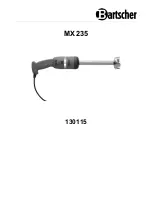
10
English --
AMS MICROPHONES
Description
AMS Microphones
are gated on only by sounds which
come from within the 120
°
acceptance angle. Sounds which
reach the microphone from outside of that range, including
background noise, will not turn the microphone on no matter
how loud they are. See the illustrations below.
When an AMS microphone is directed so a talker is within
the 120
°
acceptance angle, the microphone will trigger on
when that talker speaks. Since the microphone is not triggered
by sounds from outside of that angle, the sound is clearer than
that of conventional sound reinforcement systems. When a
microphone is on, it operates as a cardioid microphone, or as a
hemi--cardioid in the case of the AMS22 low--profile micro-
phones.
AMS microphones come in several models. Model
AMS22 is a low-profile surface--mount microphone. Model
AMS24 is a gooseneck microphone. Model AMS26 is a probe
microphone with a front pop-filter grille. Model AMS28 is a la-
valier microphone.
Connections
The AMS8100 utilizes removable block connectors for
connecting the microphones. The AMS4000 and AMS8000
utilize XLR connectors for microphone connection. The newer
block-style, screw connectors offer faster and more conve-
nient connection than soldering XLR connectors.
The AMS22 and the AMS28 come supplied with XLR con-
nectors already attached. Three options are available for con-
necting these microphones to the AMS8100. First, you can cut
off the XLR connector from the microphone cable, strip the in-
dividual wires, then slip them into the supplied block connec-
tors. Second, the Shure RKC800 (purchased separately) can
be used to adapt up to eight (8) XLR connectors to pre-wired
block connectors suitable for the AMS8100. Third, an exten-
sion cable (as shown below) can be used to connect an AMS
microphone.
The AMS24 gooseneck microphone is supplied without
an XLR connector, and can be wired directly to the block con-
nector. The AMS26 is a probe-style microphone which has an
XLR built in and a cable (as shown below) must be used to con-
nect it to the AMS8100. This same type of cable can be used
as an extension cable between the AMS22 or AMS28 micro-
phones and the AMS8100 mixer.
Under most circumstances, lengths of 150 meters (500 ft)
or greater of high quality, 2-conductor, shielded microphone
cable can be used between the microphone and the AMS mix-
er microphone input. The shield must be connected to both
ends of the cables. Good practice dictates that microphones
and cables be grounded only to the AMS mixer chassis ground
(pin 3 of the input connector).
Do not attempt to connect AMS microphones to standard
phantom-powered inputs; they will not function properly.
Placement
Use low--profile AMS22 boundary microphones on tables
and desks; use permanently mounted AMS24 gooseneck mi-
crophones on tables, desks, or lecterns; use AMS26 probe mi-
crophones on floor or desk stands, or goosenecks; use
AMS28 lavalier microphones where the talker must have free-
dom of movement.
Locate the microphones so that intended sources are
within 60
°
of either side of the front of the microphone; that is,
within the 120
°
acceptance angle angle (see illustrations be-
low). Sources of undesired sound should be located outside
the 120
°
acceptance angle.
The closer the microphones are to their sound sources,
the greater the loudness of the sound system before feedback
occurs. Likewise, the farther the microphones are from loud-
speakers, the louder the sound system can get before feed-
back occurs. These distances have a well-defined effect on
system gain before feedback, as described by the Potential
Acoustic Gain (PAG) equation. For more information on the
PAG equation, contact Shure’s Applications Group at
847--866--2525.
Sound reflections from a hard surface can hamper proper
gating. Each microphone should be at least 1 meter (3 ft) from
the wall behind it, and at least 0.3 meters (1 ft) from objects be-
hind it, such as briefcases.
120
o
AMS26
AMS22
AMS28
AMS24
+
--
PIN 1 +
(RED)
PIN 2 --
(BLACK)
PIN 3
SHIELD
PIN 1
(SHIELD)
PIN 2 +
(RED)
PIN 3 --
(BLACK)
XLR TO BLOCK CONNECTOR
TO AMS MICROPHONE
AMS
MICROPHONE
INPUT








































